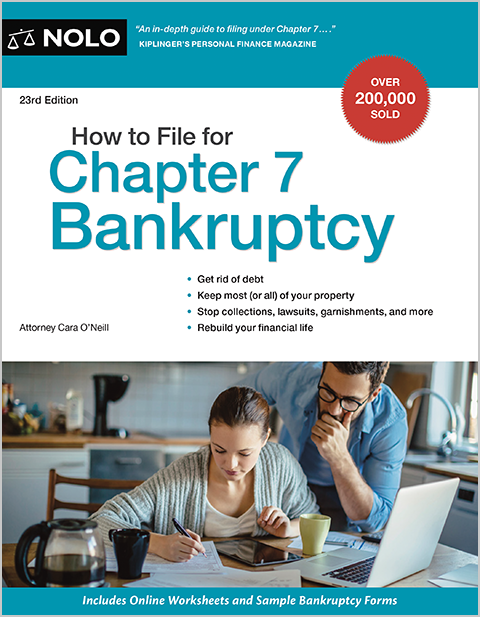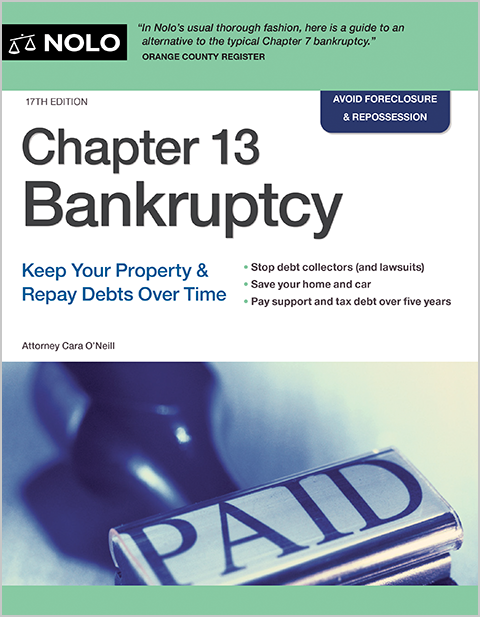Federal law protects Social Security funds in bankruptcy.
Social Security benefits are "exempt" or protected in bankruptcy, so you can keep your Social Security benefits if you file for bankruptcy, regardless of where you live. However, once commingled with other funds, it can be challenging to prove that the money came from Social Security benefits rather than another source.
The money will lose protected status if you can't prove your bank account balance is entirely Social Security funds. You can avoid unnecessary problems in bankruptcy by maintaining Social Security benefits in a separate account.
- Social Security Benefits Are Exempt Property in Bankruptcy
- Listing Social Security Funds and Other Property in Bankruptcy
- How to Protect Social Security Funds in Bankruptcy
- What to Do If You've Commingled Funds
- If You're Considering Chapter 13 Bankruptcy
- You Might Not Need to File for Bankruptcy If You're Receiving Social Security
- Consult a Bankruptcy Lawyer
- Need More Bankruptcy Help?
Social Security Benefits Are Exempt Property in Bankruptcy
While your state usually decides what you can and cannot keep in bankruptcy, federal law says all your Social Security funds are exempt property. No matter your state, you're entitled to keep your Social Security money.
However, you must prove the funds you claim are exempt Social Security funds are indeed exempt, and it isn't always easy to do. Understanding the bankruptcy process will help emphasize why you must handle Social Security funds properly before filing for bankruptcy.
Listing Social Security Funds and Other Property in Bankruptcy
When filing for bankruptcy, you must list everything you own in your bankruptcy petition without exception. It doesn't matter whether money is sitting in an account or stashed under your mattress. You must disclose it.
Most people realize they must list big-ticket items, like residential homes, rentals, vacation property, cars, and furniture. But you might be surprised to learn you must include small things, such as the following:
- silverware, disches, and linens
- hobby and sporting equipment
- jewelry and watches,
- pets and farm animals, and
- small peer-to-peer cosmetic or food storage businesses (even if you have never made a profit).
You can't forget or hide property in bankruptcy. Everything you own must be disclosed, and it becomes part of your bankruptcy case.
How to Protect Social Security Funds in Bankruptcy
Although you must disclose all property, you don't lose everything. Each state has exemption laws outlining how much property you can keep when filing for bankruptcy. If an exemption law allows you to keep a particular item, you declare it exempt in your bankruptcy petition by listing the exemption statute's code number.
Fortunately, most filers can keep necessary household items and a modest car. But there's no guarantee that everything will remain yours. The Chapter 7 bankruptcy trustee will verify whether you can keep the property and seize nonexempt property for the benefit of your creditors.
Don't Commingle Social Security Money With Other Funds
When you declare that certain funds are exempt from bankruptcy in your bankruptcy petition, you must prove your right to retain the money. Simply claiming a portion of your bank account balance is exempt Social Security benefits doesn't mean the bankruptcy trustee will believe you, especially if you've mixed or "commingled" them with other funds in the same account. Commingling makes it difficult to prove which funds are exempt.
Keep a Separate Social Security Account
Keeping your Social Security benefits in a separate account exclusively for those funds is a good practice to prevent commingling issues. It allows you to trace the source of the funds to your Social Security check or an automatic deposit from the Social Security Administration.
It's a good idea even if you aren't contemplating bankruptcy. It will help protect your Social Security money from creditors' efforts to collect judgments.
What to Do If You've Commingled Funds
If you've already commingled your funds, there are a few ways to handle the situation. Here are some strategies you may want to consider:
- Before filing for bankruptcy. Consider opening an account solely for your Social Security benefits and exhausting the commingled funds before filing bankruptcy. You'll want to use the funds to pay for necessities like rent, utilities, and food because these purchases won't be challenged in bankruptcy. Also, it's prudent to keep records.
- After filing for bankruptcy. Suppose you've already filed bankruptcy, or cannot wait to exhaust the commingled funds. In that case, you might be able to use another exemption. For example, some states have wildcard exemptions that allow you to protect any property you wish. Others are limited and don't cover real estate, cash, or bank account funds, so read the statute carefully.
If You're Considering Chapter 13 Bankruptcy
Most people who receive Social Security funds will likely file for Chapter 7 bankruptcy. If you are, this article's discussion will apply. But that's not always the case. For information about what to expect, read Can I Keep My Social Security Income During My Chapter 13 Bankruptcy?
You Might Not Need to File for Bankruptcy If You're Receiving Social Security
Not only is Social Security income protected from creditors in bankruptcy, but it's also protected from creditors outside of bankruptcy. So, it's unusual for someone receiving Social Security income to need to file. It is likely unnecessary if you have little valuable property not covered by exemptions (bankruptcy exemptions apply outside of bankruptcy in almost every state).
Learn whether you're "judgment proof" and can avoid filing for bankruptcy.
Consult a Bankruptcy Lawyer
Before proceeding with Chapter 7 or Chapter 13, talk with a bankruptcy lawyer about your options. Be sure to ask whether a bankruptcy filing is necessary or if it would be adequate to secure your funds in a separate account and turn off the phone ringer instead.
Need More Bankruptcy Help?
Did you know Nolo has made the law easy for over fifty years? It's true, and we want to ensure you find what you need. Below you'll find more articles explaining how bankruptcy works. And don't forget that our bankruptcy homepage is the best place to start if you have other questions!
|
Our Editor's Picks for You |
|
|
More Like This |
Which Bankruptcy Chapter Should I File to Keep My House? |
|
What to Consider Before Filing Bankruptcy |
Preparing for Bankruptcy: What to Do With Bank Accounts, Automatic Payments, and Utility Deposits |
|
Helpful Bankruptcy Sites |
We wholeheartedly encourage research and learning, but online articles can't address all bankruptcy issues or the facts of your case. The best way to protect your assets in bankruptcy is by hiring a local bankruptcy lawyer.
- Social Security Benefits Are Exempt Property in Bankruptcy
- Listing Social Security Funds and Other Property in Bankruptcy
- How to Protect Social Security Funds in Bankruptcy
- What to Do If You've Commingled Funds
- If You’re Considering Chapter 13 Bankruptcy
- You Might Not Need to File for Bankruptcy If You’re Receiving Social Security
- Consult a Bankruptcy Lawyer
- Need More Bankruptcy Help?

